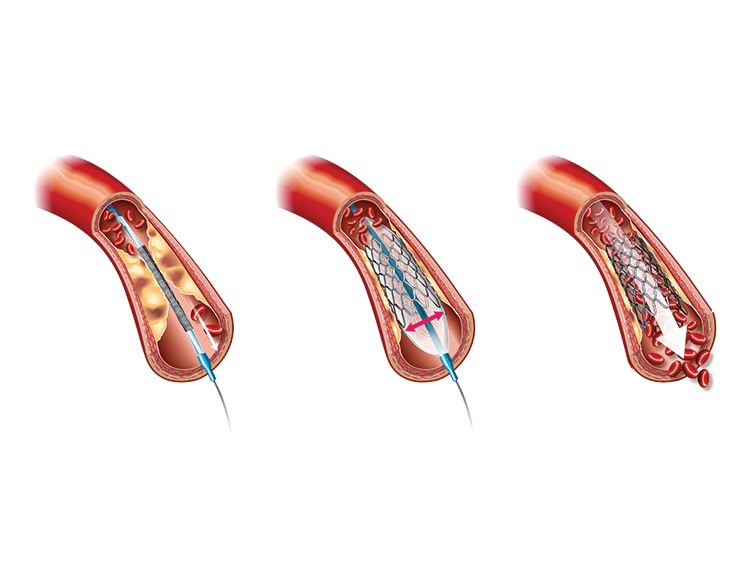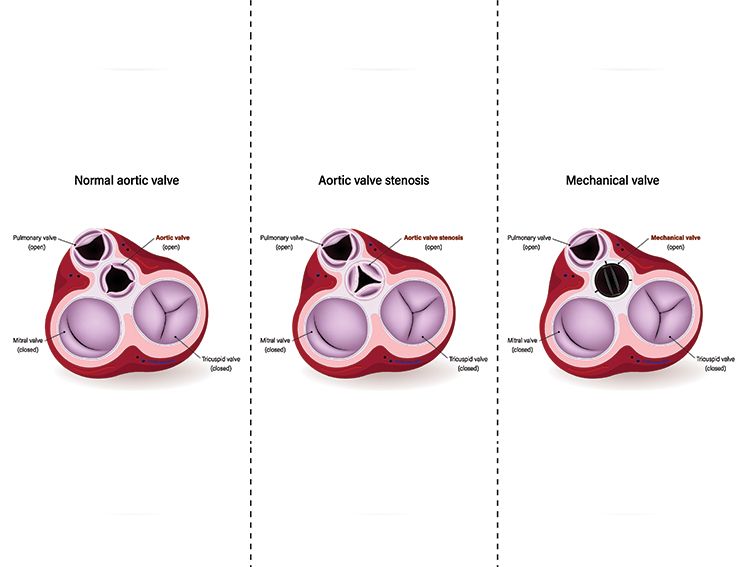
4 things to know about life after stent placement
What's Life After Stent Placement?
Stent placement is a common procedure that helps treat Coronary Artery Diseases. In this procedure, the interventional cardiologist or operator inserts a stent (a hollow cylindrical metallic mesh) to hold a coronary artery open. While performing the stent placement procedure, the operator uses a stent mounted on a balloon, which when inflated, pushes back the plaque deposits radially outward inside a coronary artery. A coronary stent is made up of a biocompatible medical-grade metal. The stent helps reduce recurrent blockages or re-narrowing of arteries after one undergoes an angioplasty. Once a metallic stent is implanted, it remains in the patient's artery permanently. Also referred to as stenting, stent placement is a minimally invasive procedure. That said, life after angioplasty can be quite different. Here's all you need to know.
Undergoing the stent placement procedure – scheduled vs emergency
Typically, you can schedule a non-emergency stent placement procedure. In such a case, you may be asked to stay overnight in the hospital, so that your recovery may be monitored. On the other hand, if you have to undergo an emergency procedure, usually following a heart attack, your hospital stay will most likely be lengthier. You may take time in resuming your normal activities.
Recovery and returning to normalcy after scheduled procedure
First few days after the procedure
Patients undergoing scheduled stent placement procedures can usually resume their light, routine activities within the first few days of the procedure. After the stent placement procedure, bruising or discolouration is likely to occur where the catheter was inserted, along with soreness in the area where pressure is applied. A patient may feel more tired than usual, in the first few days. Drinking plenty of fluids is also usually recommended in order to flush out any residual contrast dye which is typically used during the procedure to visualize the arteries.
A week to a month after the procedure
The patient can consult the doctor one week after undergoing the procedure. The patient may be permitted to resume more moderate activities, including office work, but, would be advised to avoid all activities that may cause chest pain or shortness of breath. They may be able to go back to their old schedule and begin with physical activities like strenuous workouts and lifting heavy objects about a month after the procedure. Essentially, the patient needs to get the clearance from the treating doctor before starting any rigorous activities.
Life after stent placement- lifestyle changes
To ensure an increased life span after stent placement, the doctor may also recommend making a few necessary lifestyle changes. For instance, the patient may be asked to include light to moderate exercises in their daily routine. They would be advised to give up smoking and alcohol as it can have adverse effects on their heart. Furthermore, the patient may need to follow a healthy diet to ensure good health.
Recovery and side-effects in case of an emergency stent placement procedure
Patients undergoing emergency stent placement, typically following a heart attack usually have a different recovery. As mentioned above, such patients will take a longer period of time to resume their normal activities. All patients may notice a few complications and side-effects and should seek immediate medical attention in case they experience:
- Swelling, bleeding, discomfort or pain at the site of catheter insertion
- Redness, drainage, swelling or fever indicative of an infection
- Discoloration in the arms or leg where the surgery was performed
- Faintness, weakness and chest pain
- Changes in temperature and shortness of breath
Life after angioplasty stent placement Post-procedure consultations
Patients undergoing emergency stent placement procedure may be asked to attend a couple of follow-up appointments with their doctor, to ensure the site where the catheter was inserted is healing properly. The doctor may also ask such patients to undergo a stress test a few weeks after the procedure. The stress test helps the doctor determine how one can increase their activities and recommend exercises accordingly. If needed other diagnostic tests (such as X-Rays or CT scans) may be prescribed.
Life after stent placement Medications
In order to improve a patient's survival rate after stent placement, doctors may suggest various medications. It is critical that the patient adheres to the course of treatment recommended by the doctor. The medications prescribed can help prevent blood clots. The doctor may prescribe antiplatelet medications and blood thinners. The treatment duration and medication prescribed also depends on the patient's cardiac history, the nature of the actual procedure performed, bleeding risks and whether a drug-eluting stent (DES) or bare-metal stent (BMS) is implanted.
Meril Life’s Evermine50 is breakthrough in DES Technology with Ultra-low strut thickness of 50μm for promoting early vascular healing with its Hybrid cell stent design
Blood clots are more likely to occur among patients who discontinue taking their prescribed blood thinners, and may result in fatal outcomes such as heart attacks, strokes, etc. Patients experiencing chest pain should consult their doctors immediately as chest pain may indicate re-blocking of arteries or restenosis. In case of restenosis, one may have to undergo stent placement or a balloon angioplasty again, and may be prescribed supplementary medications.
Life after angioplasty stent placement-Dietary Restrictions
To improve a patient's life span after stent placement, doctors may recommend consulting a nutritionist and following healthy eating habits. Following a healthy diet will help the patient to heal faster, reduce the risk of complications, and speed up the recovery. It will also reduce the risk of plaque build-up in arteries.
The nutritionist may suggest a diet rich in fruits, vegetables, nuts and seeds, and whole grains to reduce the risk of heart ailments. A healthy diet comprising these naturally sourced ingredients nourishes the body with plenty of heart-positive nutrients including vitamins, minerals, dietary fibers, and antioxidants. The nutritionist may also suggest non-vegetarian foods like eggs, white meats, and fish rich in healthy omega-3 fats as well as low fat dairy and plenty of liquids. The patient may be asked to reduce salt intake and avoid sugary foods, which contribute to weight gain and further risks of heart diseases.
Final note
Life after stent placement does change. Based on how well one follows their doctor's advice, it can even lead to a better quality of life than before. For instance, following a healthy diet and moderate activity can help attain good cardiac health in the long run. They can be more physically active, travel, feel more energetic, and notice improvement in overall health. As long as one follows their doctor's advice and consults the doctor regularly, there is every chance that one has a longer and healthier life span post an angioplasty.



